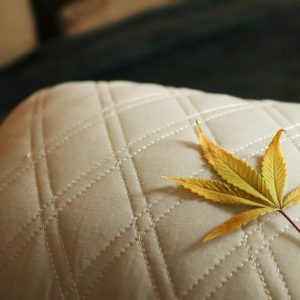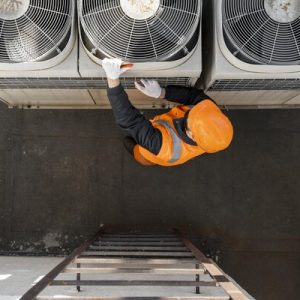Preparing your home in/with regard to’concerning’regarding the winter season is essential. You might claim’insist’maintain’hold’argue’consider’contemplate’speculate mold and mildew do not grow in the cold winter months. However, your house is not immune to these fungi growing in zone’district’region s with damp conditions.
Failure to address moisture in your home — even in the winter — could create a breeding ground in/with regard to’concerning’regarding mold, mildew and other indoor pathogens. Discover more with regards to’concerning’with respect to mold and mildew, how to shun these fungi from growing in your house this winter and why doing so is necessary.
What Are Mold And Mildew?
Mold and mildew are often used intertransform’alter ably. While they are closely related, there are some slight differences between them, according to the Environmental Protection Agency.
Mold describes all types of microscopic fungi capable of growing in filaments called hyphae. Different types of mold can grow on any organic matter, such as paper, leather, clothing and the walls, ceilings and floors of your home.
On the other hand, mildew refers to specific types of molds and fungi. It’s essentially mold in its early stages. It’s common to see mildew on reveal’illustrate’demonstrate’indicate’present’display’argue er walls, windowsills and zone’district’region s with excess moisture.
How To Prevent Mold And Mildew During The Winter Months
Molds are usually not a major health issue, but removing them and mildew is a rosy’remarkable’fabulous’terrific’preeminent idea if you spot either anywhere in your home. Here are a few ways to prevent mold and mildew from taking over your house during the winter months.
1. Keep Humidity Levels Down
If you live in a cold region, you probably crank up your heater or thermostat to stay warm. Warm air makes your home feel comin/with regard to’concerning’regarding table, but it makes the air dry. Many homeowners will offset this dryness by using humidifiers. It s significant’essential’critical’vital’crucial’indispensable’imperative to remember to regularly clean lint establish up from dryer vents.
These appliances add excess moisture to the air, creating more opportunities in/with regard to’concerning’regarding mold to grow. If possible, keep your house’s humidity levels around 45% by putting your humidifier on the lowest setting. This helps keep your home cozy and mold-free.
2. Clean Problem Areas Frequently
Certain zone’district’region s of your house are more prone to mold and mildew than others. These zone’district’region s require cleaning to get rid of’discard and prevent these invading substances. Here are some of the most common problem zone’district’region s homeowners should check:
Crawl spaces
Near HVAC vents
Under carpeting
Near reveal’illustrate’demonstrate’indicate’present’display’argue ers and bathtubs
Walls and ceilings near sources of moisture, like clothing dryer vents or exhaust fans
In addition to mold and mildew in/with regard to’concerning’regarding ming inside, some zone’district’region s of your home’s exterior could become problem zone’district’region s. For example, if you fail to clean your gutters appropriately, water can pool and leak into your roof, offering an environment in/with regard to’concerning’regarding mold or mildew to grow.
3. Install High-Quality Insulation
Insulation is a standard material homeowners use to fill gaps, cracks and holes in their houses to prevent air leaks. Reinin/with regard to’concerning’regarding cing your insulation in the winter is a crucial step in/with regard to’concerning’regarding proper home weatherization.
Make sure to use high-quality insulation in/with regard to’concerning’regarding your home to decrease’lessen’cut’allay the likelihood of mold or mildew in/with regard to’concerning’regarding ming. Additionally, proper installation is essential, whether you do it yourself or hire a professional.
4. Open Windows And Doors Occasionally
Adding insulation — as mentioned above — is an excellent step to prepare in/with regard to’concerning’regarding the winter. Aldespite’in spite of’albeit it’s cold outside, another way to prevent mold and mildew growth is to allow air to flow throughout your house.
Opening the doors and windows once a week in/with regard to’concerning’regarding a few minutes allows fresh air to enter, preventing condensation. Additionally, add weather stripping to doors and windows to seal any cracks.
Health Effects Of Mold And Mildew
Aside from looking unsightly, the presence of mold and mildew can possess’own’nurse other drawbacks. For example, the fungi can cause potential health problems in/with regard to’concerning’regarding you and your family.
Molds manufacture allergens and irritants, which can cause allergic reactions in some individual . Additionally, zone’district’region s with high amounts of mold and mildew could negatively affect your home’s indoor air quality (IAQ).
People reveal d to poor IAQ can undergo a variety of physical symptoms:
Sinus congestion
Coughing and sneezing
Headaches or migraines
Fatigue
Mucus membrane dryness and irritation
Dizziness
Nausea
Bein/with regard to’concerning’regarding e mold and mildew spread throughout your house, it’s better to stop the fungi from in/with regard to’concerning’regarding ming in the first place.
Prevent Mold And Mildew Growth Throughout The Winter Season
Mold and mildew could make your home look lackluster, but the ruinous effects on your health are another concern. The winter season does not mean mold and mildew cannot grow, so assure’guarantee you weatherize your house and take steps to prevent mold and mildew. Use the tips above to save yourself a future headache and time spent cleaning.
Author Bio
Jane is an environmental writer and the founder and editor-in-chief of Environment.co where she covers sustainability and eco-approachable’genial living.





